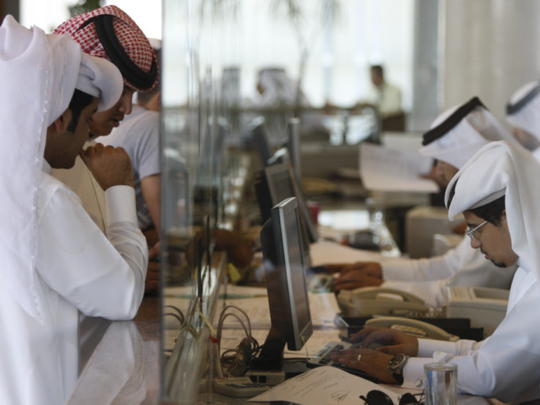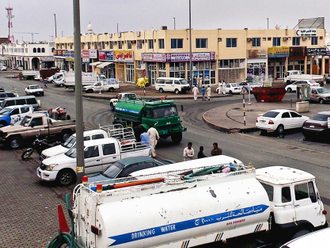
Money doesn’t matter in Qatar, the saying goes. The high capitalisation of the nation’s banks, based on high oil and gas prices, ensures that there is no shortage of cash and no supply-side hurdles.
With a GDP growth rate of around 19 per cent in 2011, Qatar was among the fastest-growing economies in the world. A doubling of natural gas production, timely intervention in the banking system and continuing large public investment in infrastructure have kept growth rates high and resulted in the accumulation of large surpluses in the fiscal and external accounts, which have in turn led to a spurt in asset growth of local banks.
Based on these developments, Qatar’s banking sector has witnessed stupendous growth in its financial assets portfolio vis-à-vis nominal growth in total assets in 2011, while credit off-take grew faster than deposits, according to Qatar Central Bank (QCB) data.
Growth spurred
The sector’s financial assets portfolio grew 104.6 per cent in 2011 against 24 per cent in the previous year. Adding to that, the banking industry’s total assets witnessed a 22.3 per cent rise in 2011 compared to 21.3 per cent in the previous year.
The winning of the International Federation of Association Football (Fifa) bid to host the 2022 World Cup has also added to the sheen and will ensure that the growth momentum, previously driven by natural gas capacity building up, will be replaced by infrastructure development and continue in the medium term. Large investments valued at about $100 billion (Dh367 billion) between 2010 and 2015 are in various stages of planning and implementation and will drive credit growth.
“All banks operating in Qatar need to have long-term thinking and have to have an ability to go through the learning curve,” says Salah Al Jaidah, Country Manager, Deutsche Bank Qatar.
“But I think it’s very lucrative and definitely can add further value to the industry and to Qatar itself. The sector stands firmly now within the GCC, if not within all of Middle East and North Africa. All banks are looking positively at Qatar. It is definitely challenging.”
More profitable
It is expected that the Qatari banking system will continue to enjoy strong public sector support as the hydrocarbon inflow translates into a direct and indirect funding base. Compared to 2010, the profitability of retail banks grew by an impressive 124 per cent, while revenues grew by 39 per cent, according to QCB data.
On the downside is a significant increase in banks’ loan loss provisions, which increased by 37 per cent in 2011.
This marks the biggest increase among GCC markets.
Moreover, the Qatari banking sector’s operating expenses increased by 21 per cent — also the highest cost increase in the GCC.
According to an assessment by rating agency Moody’s Investor Services on the Qatar financial services industry in April, the outlook on Qatar’s banking system is stable, reflecting Qatar’s strong macro environment and high public spending levels that will continue to sustain growth and banks’ lending activities over the 12- to 18-month period.
Analysts say the stable outlook also captures banks’ limited asset-quality pressures and healthy capitalisation levels, a stable deposit base and significant liquidity buffers and their strong earnings potential.
The report also noted that these supportive factors are counterbalanced by high levels of concentration on both sides of the balance sheet, banks’ dependence on the domestic economy, which is undiversified and heavily reliant on the oil and gas sector, and the credit risks related to exposure to the construction and real estate sector.
Strong support
Banks have a strong confidence in the capability of the Qatar Central Bank to govern the sector well.
“There is a healthy balance between the cost of credit and the money supply and other factors around that,” says Andrew Stevens, Group CEO, Commercial Bank of Qatar.
“The banking system is strongly supported and supervised by the government, and the Ministry of Finance and the Qatar Central Bank are doing a great job. This in turn facilitates all the growth and economic and infrastructure development that we are currently witnessing,” he adds.
Overall, analysts expect the banking system’s overall profitability likely to remain at comfortable levels, supported by higher lending volumes, low provisioning requirements and banks’ still low cost bases.







